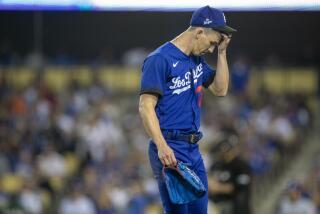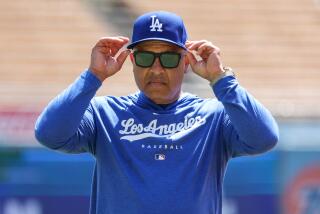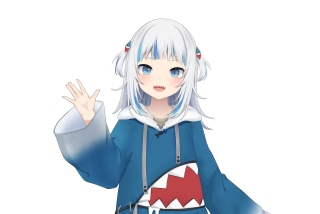Patt Morrison Asks: Dodgers dugout doc Sue Falsone
The Dodgers’ pitchers and catchers will show up at Camelback Ranch in Arizona in a few days for spring training. And so will Sue Falsone. She won’t be in the stands; she’ll be in the dugout and the clubhouse, with the guys. She’s the Dodgers’ new head athletic trainer and physical therapist — and she is the first woman to become head trainer in any of the four major professional sports.
This Buffalo gal has taken a career lap around the country, from her native upstate New York to a master’s degree at the University of North Carolina-Chapel Hill, to the boys of summer’s spring training turf in Arizona, and a previous stint at Dodger Stadium, where she was first hired as an assistant trainer for the team in 2007.
Judging by her fan mail, they might have to start issuing baseball cards for trainers.
The Dodgers are being sold; L.A.’s been in an uproar about the whole soap opera. Is there something you can do to provide the players with support through all of this?
I wasn’t in the clubhouse last year, so I don’t know everything that has gone on, but the team is the team and we’re going to be focused on winning. The goal for every organization is to win the World Series. If I can just keep them healthy and keep them on the field, that’s the best thing I can bring.
Were you into sports when you were growing up in Buffalo?
Synchronized swimming, believe it or not! I think I swam before I walked. [By high school] I lost hand-eye coordination and balance development [for other sports] — too much time in the pool.
Your balance, your coordination, really develops around then. When I got to high school, I ran track one year, I played soccer a couple of years — I was terrible at all of it. I enjoyed being active [but] I wasn’t a great athlete.
Did you want to go into physical therapy even then?
I thought I wanted to be an orthopedic surgeon. And then I was playing soccer in high school [and] I pulled my hamstring and ended up having to go to physical therapy. I thought the stuff they were doing was so cool. So I got my degree instead of doing pre-med. I realized physicians didn’t really get to do all that I wanted to do, which was spend time with patients and help them through that process. Being behind the [surgical] mask and operating was not what I wanted to do.
How did the emphasis on sports come about?
My mom will say that I would always say I wanted to work for the Buffalo Bills. Once I got into physical therapy school and started working at a clinic in Raleigh, North Carolina, the more I watched the athletic trainer at that clinic work with high school and college athletes, I thought, “Man, that’s what I really want to do.”
You ended up in Arizona doing sports medicine before you first came to L.A.
I was talking to my friend [from Buffalo] and I’d broken up with a boyfriend and was in one of those spots that I needed to make a complete change.
She said, “Move somewhere sunny and I’ll move with you.”
She flew to North Carolina, we packed up my apartment, put it all in a truck, drove to Arizona, took the first exit that said “Phoenix city limits.”
I got my PT license in Arizona and was working part time in a clinic and reading Sports Illustrated about Nomar Garciaparra, how he had won the batting title that year, and that he trained at Athletes’ Performance [a training and rehabilitation center headquartered in Phoenix where Falsone is still a vice president].
So I went down there, started hanging out, and [the owner] realized I was not going to go away, so he gave me a job.
You’ve worked with hockey players, basketball and baseball players -- does each sport deal differently with physical therapy and training?
Basketball players often deal with knee injuries, foot and ankle; baseball players, it’s a little more shoulder and elbow issues. Soccer players deal with a lot of groin and abdominal issues, so each has its focus.
I had to go into an NFL locker room to do a postgame interview once; athletes are very unselfconscious about their bodies.
It’s just about the professionalism.
You are the first female team trainer in a major professional sport. Do the players ever make girl-related comments about that?
They don’t. When people are in pain, they just want to feel better. They’re not thinking, “This is a girl, this is a guy.” They’re just thinking, “I trust this person.”
From a professional athlete’s standpoint, that’s their job, and I can’t imagine if I had an injury that prevented me from doing my job. They’ve been training their whole lives to be this athlete, and then they have this injury that affects that, their career, the way they provide for their family.
So they have to trust you a lot.
You never know what you’re going to encounter as an athletic trainer dealing with a team. I’ve had a guy come in with chicken pox as an adult. The team look[s] to you for everything, like a dental issue. The trainer has to be able to get [them] to this or that physician. The trainer is the entry point for the athlete into the healthcare system.
You were born after Title IX welcomed women into sports; is it a big deal for you to be the first woman to be head athletic trainer in pro sports?
It’s a huge deal to me, and hopefully that provides a lot of open doors for women in the future. Where gender doesn’t become a big deal [is that] I want success for the guys. Athletic training is not gender specific.
Have you been hearing from girls saying, “I want to do this too”?
Whether it’s emails or Facebook or Twitter messages, it’s literally hundreds and hundreds. Girls in college in athletic training emailing and saying, “We talked about you in class today. You’re such an inspiration. Do you have any advice?” It’s been very humbling, all these people I’ve never met [who] reach out and say, “I just wanted to let you know I read that story and I’m excited for you.” It’s pretty cool.
Do you think we’ll see women and men playing on the same pro sports teams in our lifetimes?
I read about this little girl playing [middle school] football; that she sat out one game because the opponents refused to play [against] a girl. [Her team won 60-0.] She’s paving the way too, playing football. Maybe we will [see women playing pro sports with men]. It starts at that level.
Do you have a favorite sports movie?
One of my favorite baseball movies is [HBO’s] “61*.” I loved that movie. It’s about the home run race between Mickey Mantle and Roger Maris.
Is baseball your favorite sport?
It has become that. Being from Buffalo, you’re required to be a Bills [football] fan and a Sabres [hockey] fan. It wasn’t until I got to college that I thought, oh, there’s a sport called baseball that’s pretty cool too. That’s when I started getting into the Red Sox, watching Red Sox baseball. [She later treated Red Sox pitcher Curt Schilling].
Are you still a secret Red Sox fan?
I don’t know if I’m allowed to answer that question!
This interview was edited and excerpted from a longer taped transcript. Interview archive: latimes.com/pattasks.
More to Read
A cure for the common opinion
Get thought-provoking perspectives with our weekly newsletter.
You may occasionally receive promotional content from the Los Angeles Times.











